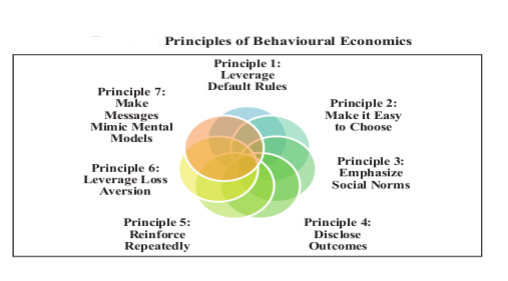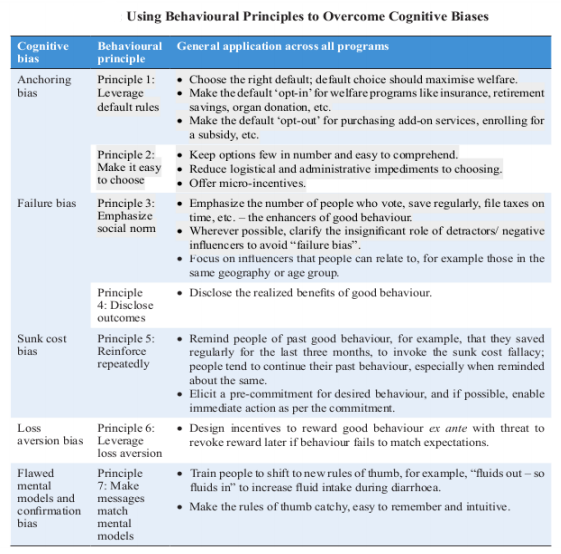These UPSC Notes on nudge policies in India as well as scheme examples are aligned with the UPSC Syllabus and aspirants should prepare this topic for General Studies Paper III.
Behavioural economics can offer deep insights into how policies and schemes can be implemented in a country. There have been many schemes in India which have been successfully implemented because of insights from this field, and these issues are frequently seen in the news; hence the topic’s relevance for the UPSC Mains.
IAS Exam aspirants can find more notes for UPSC Mains General Studies topics from the links given at the end of the article.
| Learn from the IAS Toppers to know what to do or what not to during your exam preparation!!
To strengthen your preparation for the upcoming UPSC exam, check the following links: |
What are ‘nudge policies’?
Recently, behavioural economists have discovered the efficacy of a new class of “nudge” policies that lie between laissez-faire and incentives. Such policies leverage insights from human psychology to influence the choice of the architecture of people. Nudge policies gently steer people towards desirable behaviour even while preserving their liberty to choose.

Understanding the principles of behavioural economics, therefore, can bridge the gap between people’s preferences and the choices they make, and thereby enable informed policymaking. Many governments, including the U.S., the U.K. and Australia, have set up dedicated units to use behavioural insights for effective policymaking.
Examples of Successful Applications of Behavioural Insights in India
There are many examples of government schemes that have been successful because of the use of insights from behavioural economics principles. Prominent examples are the Swachh Bharat Mission (SBM) and the Beti Bachao, Beti Padhao (BBBP) programme.
Swachh Bharat Mission (SBM)
- Launched on 2nd October 2014 (Gandhi Jayanti day) to attain universal sanitation coverage in the country, SBM is not India’s first programme to tackle the issue of sanitation.
- But, it is the first one to focus on the change of behaviour as much as, if not more than, toilet construction.
- SBM has been successful in not only giving toilets but also in making sure that these toilets are utilised. Independent verification of the Mission through the National Annual Rural Sanitation Survey (NARSS) 2018-19 has shown that 93.1 per cent of rural households had toilet-access and that 96.5 per cent of the rural households that have access to a toilet use it. This re-confirmed the Open Defecation Free (ODF) status of 90.7 per cent of villages that were previously declared and verified as ODF by various districts/states.
- Female literacy measures and early marriages of girls which are indicative of rigid social moors correlate strongly with usage and access of toilets across states.

Use of Behavioural insights in SBM:
- Launch Date and Symbol:

Behavioural economics emphasises the role of context in influencing choices and decisions, which has been effectively adopted by the SBM campaign. SBM was launched on October 2, 2014, the birth anniversary of India’s most honoured ‘role model’ – Gandhiji. The idea was to organise a mass movement, quite like ‘satyagraha’ for a cleaner India. The symbol employed for the programme invokes Gandhi’s ideas.
- Swachhagrahis: Over 5 lac swachhagrahis (foot soldiers of the SBM) were recruited; the word swachhagrahi intentionally used to reinforce the similarity with satyagrahis. Also, swachhagrahis could leverage their social ties within their villages to produce change.
- Additionally, the mission relies on community-based approaches to sanitation. The dread of community scorn, or a need to fit in, or both, have led many people to give up open defecation.
- Appealing to the emotions of people, for instance, by placing a sense of disgust to open defecation, has a better chance of inducing people to change.
Beti Bachao, Beti Padhao (BBBP)
India’s sex ratio at birth (SRB) was on a steady fall until the first decade of the 21st century, when many initiatives, including Beti Bachao, Beti Padhao, were launched in rapid succession to reverse this alarming trend. The BBBP programme was launched on January 22, 2015, to tackle the issue of Child Sex Ratio decline and related concerns of women and girl empowerment.
Aspirants can refer to the UPSC Mains Syllabus at the linked article.
Use of Behavioural insights in BBBP
- Match “mental models” of people: The campaign was initiated from Panipat, Haryana, which had the worst child sex ratio among Indian states. Haryana’s child sex ratio was 834 as compared with the national average of 919 (Census 2011 data). The choice of Panipat in the ‘battle’ against the socially entrenched bias against girl children was also symbolic via the association with the famous battles of Panipat fought in 1526, 1556 and 1761.
- The programme was expanded to all districts on March 8, 2018, from Jhunjunu, Rajasthan. Rajasthan was chosen because it showed improvement by 34 points from 888 girls per 1000 boys in 2011 to 922 per 1000 boys in 2017-18 to indicate that good performance will be rewarded. Also, March 8 (International Women’s Day) was chosen in 2015-16 as the launch date to reinforce the emphasis on gender empowerment and fix the social norm of ‘girls are valuable’.
- Effective Use of “Social norm” in BBBP:
- ‘Selfie with Daughter’ initiative: Two factors made the campaign successful: first, informing people what the norm is, and second, displaying the thousands of other people who were acting in line with that norm.
The strategy confronted a cognitive bias known as ‘failure bias’ (Baumeister and Bratslavsky, 2001). The failure bias is the inclination to focus on failures rather than successes, chiefly because failures have greater visibility. Since failures bag the spotlight, people are inclined to think that failing is the norm, or at least that failing is more common than it really is. Hence, in the context of BBBP, the focus should be on people who treat their girls fairly; this rectifies the failure bias and makes the social norm of fair treatment of girls unmistakably clear.


Suggestions for Policy Makers
The possibilities, however, to employ the principles of behavioural economics to policymaking, especially in India where social norms so crucially influence behaviour are enormous. To avail these benefits, the following measures are suggested for implementation.
- Set up a behavioural economics unit in the Niti Aayog.
- Every program must go through a “behavioural economics” audit before its implementation.
- As several programs are administered by state governments, the behavioural economics team can work with various state governments.
Conclusion
Behavioural economics is, however, not a panacea to policymaking; its potential needs to be understood and put in perspective. Nudge policies cannot and should not supplant every incentive-based and mandate-based policy. For example, a policy that merely nudges people to refrain from assaulting others will fail as such situations warrant strict decree or, at least, a stronger push than a mere nudge. However, the majority of public policy issues are amenable to incorporating nudges. In fact, many incentive and mandate- based policies may be clubbed with a nudge effect to increase their efficacy.
Frequently Asked Questions about Nudge Policies
What is a Nudge Policy?
How are nudge policies effective?
Nudge Policies (UPSC Notes – GS 3):-Download PDF Here
Aspirants can check UPSC Notes page for free GS1, GS2, and GS 3 notes.
Related Links:
| UPSC FAQ | IAS Eligibility | UPSC Current Affairs Quiz |
| UPSC Mains Question Writing Practice | UPSC 2020 Calendar | UPSC Current Affairs |
| UPSC Monthly Magazine | NCERT Notes for UPSC | IAS Toppers |
Comments